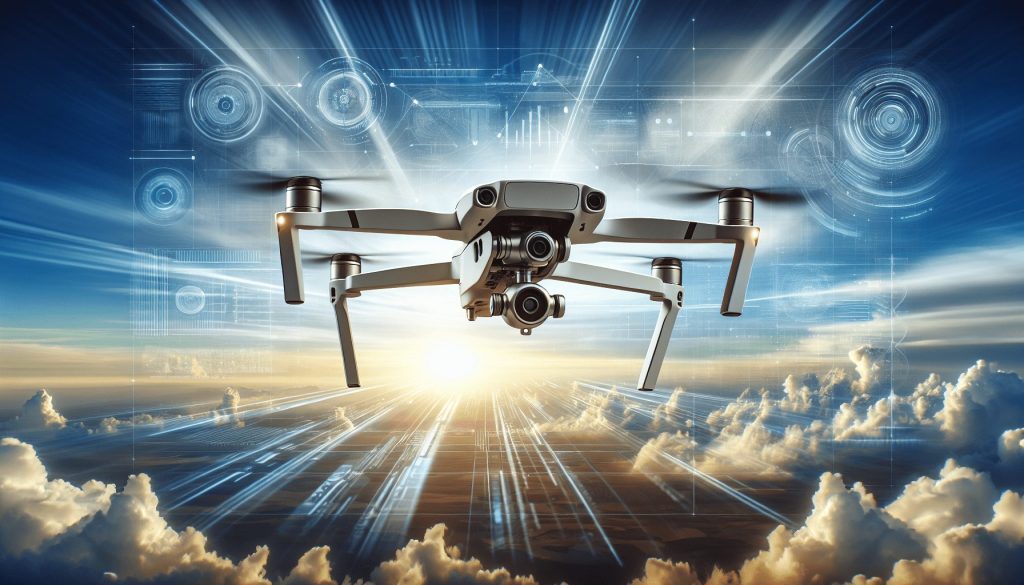Physical Address
304 North Cardinal St.
Dorchester Center, MA 02124
Physical Address
304 North Cardinal St.
Dorchester Center, MA 02124


This post may contain affiliate links. As an Amazon Associate, we may earn commissions from qualifying purchases.
Have you ever looked at the sky and seen a small, buzzing object hovering like a high-tech hummingbird and wondered, “what is it capable of?” You’ve probably seen one of the many aerial drones that have become increasingly common in recent years. The evolution of these sophisticated devices is nothing short of impressive. Let’s explore some of the key advancements in aerial drone technology that make today’s drones far superior to those of just a few years ago.

From their initial use in military applications to their integration into various civilian sectors, drones, or Unmanned Aerial Vehicles (UAVs), have undergone substantial advancements. Technology has propelled these machines from simple remote-controlled crafts to highly autonomous and intelligent systems.
Initially, drones were large, cumbersome, and predominantly used for reconnaissance in military operations. Their capabilities were limited by the technologies of the time, including rudimentary flight controls, short battery life, and limited navigation capabilities. The need for innovation quickly became apparent, leading to rapid advancements.
In the past decade, drone technology has seen a significant surge in innovation, thanks to advances in various fields such as artificial intelligence, materials science, battery technology, and sensor systems.
One of the significant advancements in drone technology is the improvement in flight control systems. Modern drones now come equipped with advanced flight control algorithms and systems that make them easier to operate and more stable in the air.
Autopilot functions have seen a drastic improvement. By incorporating Global Positioning System (GPS) integration, drones can now fly pre-set routes, hover in place with impressive accuracy, and even return to their point of origin autonomously if they lose connection—a feature often referred to as “return-to-home.”
Modern drones are equipped with sophisticated obstacle avoidance systems. Using a combination of sensors, cameras, and machine learning algorithms, these drones can detect and navigate around obstacles in real-time, significantly reducing the risk of collisions.
| Technology | Description |
|---|---|
| Autopilot | Allows drones to follow pre-programmed flight paths and improves stability. |
| GPS Integration | Assists with navigation and enables the “return-to-home” feature. |
| Obstacle Avoidance | Utilizes sensors and cameras to detect and avoid obstacles in real-time. |
Battery technology has also seen remarkable advancements, directly impacting drone flight time and performance. In the early days, drones could only stay airborne for a few minutes, but contemporary models feature significantly longer battery life.
The development of high-efficiency lithium-polymer batteries has been a game-changer. These batteries store more energy per unit weight, allowing for extended flight times while maintaining a lightweight form.
Some models now offer interchangeable batteries, enabling you to swap out a depleted battery for a charged one quickly. Additionally, advancements in charging technology mean that you can fully charge these batteries in less time, minimizing downtime between flights.
| Feature | Benefit |
|---|---|
| High-Efficiency Batteries | Longer flight times without adding much weight to the drone. |
| Interchangeable Batteries | Quick battery swaps for continuous operations. |
| Advanced Charging Tech | Reduced downtime between flights. |
The improvement in camera technologies has been one of the most visually evident advancements in drone technology. Modern drones come equipped with high-definition cameras capable of capturing stunning images and videos.
Today’s drones often feature 4K, and in some cases, even 8K cameras, allowing for incredibly detailed aerial footage. These high-resolution cameras are complemented by advanced image stabilization technologies that ensure smooth and high-quality video capture.
Beyond traditional cameras, drones now incorporate thermal and multispectral imaging capabilities. These technologies have found applications in agriculture, construction, and emergency services by providing insights that are invisible to the naked eye.
| Camera Type | Application |
|---|---|
| 4K/8K High-Resolution | Captures detailed images and videos for media and entertainment. |
| Thermal Imaging | Used in search and rescue, surveillance, and infrastructure inspection. |
| Multispectral Imaging | Assists in agriculture and environmental monitoring. |

The inclusion of various advanced sensors has expanded the functionality and applications of drones. By integrating different types of sensors, drones can perform a wide range of tasks more efficiently.
Light Detection and Ranging (Lidar) and Radio Detection and Ranging (Radar) systems enable drones to map terrains and environments in three dimensions. These sensors are crucial for applications such as topographical mapping, environmental monitoring, and autonomous navigation.
Drones equipped with environmental sensors can measure air quality, temperature, humidity, and other atmospheric conditions. These capabilities are essential for scientific research and environmental monitoring.
| Sensor Type | Application |
|---|---|
| Lidar and Radar | Creates detailed 3D maps, useful for topographical and environmental studies. |
| Environmental Sensors | Measures air quality and atmospheric conditions for scientific research. |
One of the most transformative advancements in drone technology has been the integration of advanced software and Artificial Intelligence (AI). These technological improvements allow for more autonomous and intelligent behaviors.
Machine learning algorithms enable drones to recognize patterns and learn from data. These algorithms can be used for various applications, including image recognition, predictive maintenance, and even autonomous decision-making.
Advanced software allows drones to process data in real-time, providing immediate insights and feedback. This capability is particularly useful in scenarios requiring instantaneous decision-making, such as search-and-rescue operations or live event coverage.
| Feature | Benefit |
|---|---|
| Machine Learning | Enables autonomous decision-making and pattern recognition. |
| Real-Time Data Processing | Allows for immediate analysis and insights. |

The advancements in drone technology have expanded their applications far beyond military and hobbyist uses. Today, drones are utilized across various industries, offering unique solutions to complex problems.
In agriculture, drones are used for crop monitoring, spraying pesticides, and even planting seeds. They provide farmers with real-time data on crop health, soil conditions, and other critical metrics, enabling more efficient and sustainable farming practices.
Drones are increasingly used in the construction and infrastructure sector for surveying, mapping, and inspecting buildings, bridges, and other structures. They can quickly cover large areas and provide detailed visual and thermal data, improving safety and efficiency.
Emergency services have also benefited from drone technology. Drones are used in search-and-rescue missions to cover vast areas quickly and locate individuals in distress. They can also deliver medical supplies to remote or hard-to-reach locations.
| Industry | Application |
|---|---|
| Agriculture | Crop monitoring, pesticide spraying, seed planting. |
| Construction and Infrastructure | Surveying, mapping, structural inspections. |
| Emergency Services | Search-and-rescue, medical supply delivery. |
Despite the impressive advancements, there are still challenges to overcome. Issues such as regulatory restrictions, privacy concerns, and technical limitations must be addressed to fully realize the potential of drone technology.
One significant challenge is navigating the complex web of regulations governing drone use. Different countries have varying rules and restrictions, making it challenging to standardize operations on a global scale.
As drones become more prevalent, concerns about privacy and ethical use have emerged. Ensuring that drone use respects individual privacy and follows ethical guidelines is crucial for public acceptance.
While battery life has improved, it still remains a limiting factor for extended missions. Additionally, the miniaturization of advanced sensors and computing power continues to be a technical challenge.
Looking forward, the future of drone technology appears promising. Ongoing research in areas like quantum computing, nanotechnology, and AI holds the potential to overcome current limitations and introduce even more sophisticated capabilities.
| Challenge | Description |
|---|---|
| Regulatory Hurdles | Navigating differing international laws and regulations. |
| Privacy and Ethical Concerns | Ensuring respectful and ethical use of drone technology. |
| Technological Limitations | Addressing battery life and miniaturization challenges. |
| Future Prospects | Research in advanced fields promises further breakthroughs. |

The advancements in aerial drone technology are nothing short of remarkable. From improved flight controls and battery life to sophisticated camera systems and advanced sensors, modern drones offer capabilities that were once the stuff of science fiction. As we continue to overcome existing challenges and push the boundaries of what’s possible, the future for drone technology looks incredibly bright. Whether you’re a hobbyist, a professional, or simply curious, there’s never been a better time to be excited about the possibilities that lie ahead in the world of aerial drones.